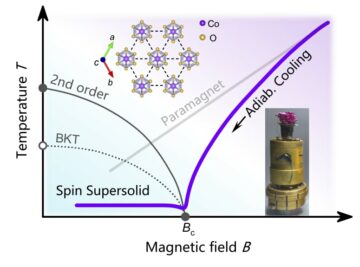All-optical devices promise higher-frequency processing and faster information transfer, compared to their electronic counterparts. An elementary component of this circuitry is a switch fast enough to deal with optical frequencies. Now, Fei Chen at East China Normal University and his colleagues in China, have developed a room temperature ultrafast optoelectronic switch using a Bose-Einstein condensate (BEC) of polaritons. This device pushes the speed frontier of all-optical controlled polaritonic switches at room temperature towards the terahertz regime.
Light and matter quasiparticle
Exciton-polaritons, or polaritons, are quasiparticles made from a coupling between photons and excitons, the latter being electron-hole pairs. Two of the most important properties of polaritons have been used in this work. First, the quasiparticles are bosons and can therefore create a Bose-Einstein condensate composed of a macroscopic number of particles in a single quantum state. In this state, polaritons emit coherent light, which means that a BEC of polaritons can act as a polariton laser. Second, the large exciton binding energy of some semiconductors – for example, zinc oxide (ZnO) – allows the existence of room temperature excitons, an important feature for developing practical devices. These two properties have made polaritons a stimulating platform to study BECs at room temperature and to develop optoelectronics circuitry for quantum and all-optical computing.
The researchers created a polaritonic BEC by exciting the system with a high energy laser pulse (called the “pump”), which increases the polariton population drastically. Instead of waiting for the polariton population to disappear after its characteristic lifetime, on the order of a picosecond, the novel idea of Fei Chen and colleagues is to use a “control” signal to interact with the photonic part of the polaritons and allow their rapid annihilation. Their system exhibits an ultrashort switching time and high extinction ratio, vital features of a high-quality switch.
Switching time
To create their switch, the team used a ZnO semiconductor microcavity and an ultraviolet pump pulse of a few femtoseconds of duration. Pump photons reflect back and forth in the cavity and couple with ZnO quantum wells embedded inside the cavity, creating a high-density profile of a polariton BEC, which comprises close to 20 million quasiparticles. The polaritons leak photons, which can be detected as the output of the device. When applied, the control pulse disturbs the BEC, allowing the depletion of the polariton population. The depletion happens at room temperature and on the hundred femtosecond timescale. This corresponds to the terahertz regime and is 100 times faster than previous optoelectronic switches.
Extinction ratio
Another important feature is the “on-to-off” ratio of the system, also known as the extinction ratio. The greater the ratio, the better the switch, as it will be less sensitive to noise. The extinction ratio of this switch is around one million, which is orders of magnitude greater than previous polariton switches. This high extinction ratio, coupled with the switch’s ultra-fast switching time and room temperature operation of are key features required for the development of future terahertz polaritonic and all-optical devices. Therefore this work represents an important advancement in this direction.
More details about this new switch can be found in a paper published in Physical Review Letters.













